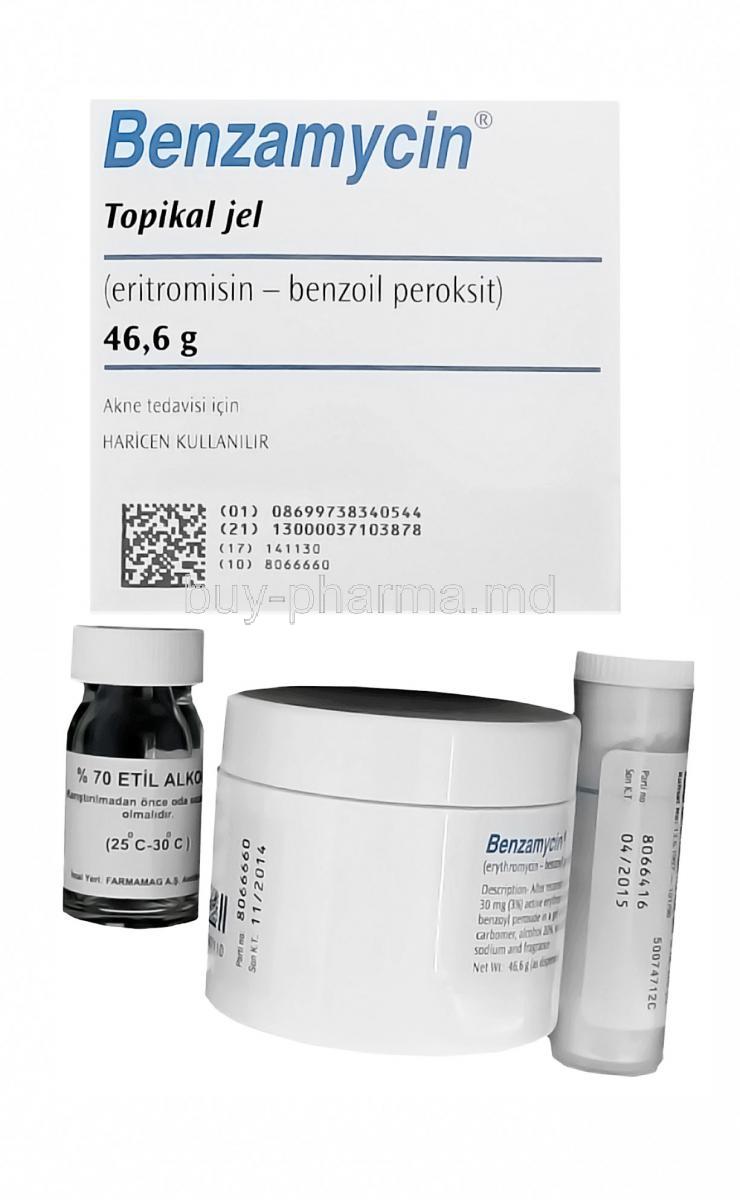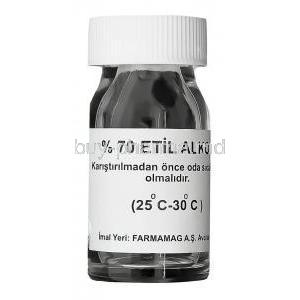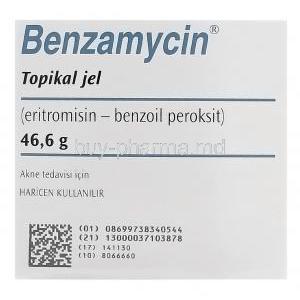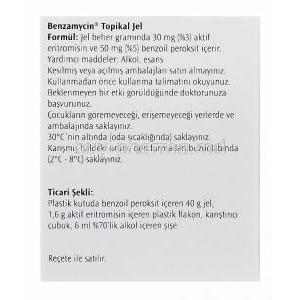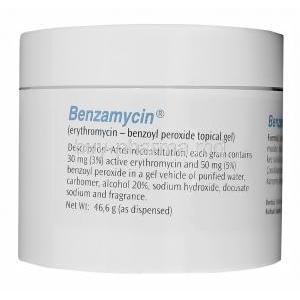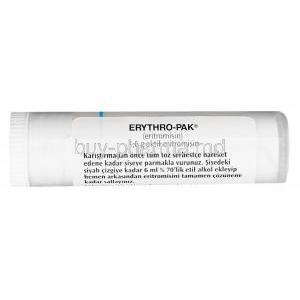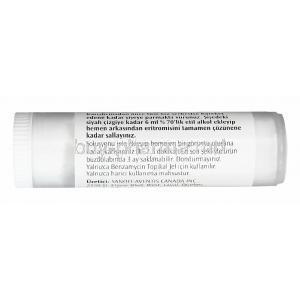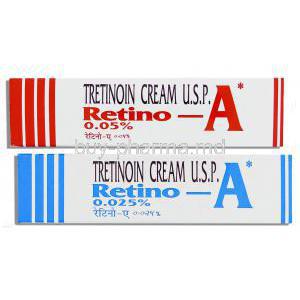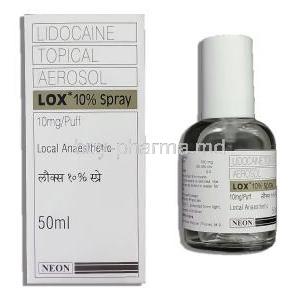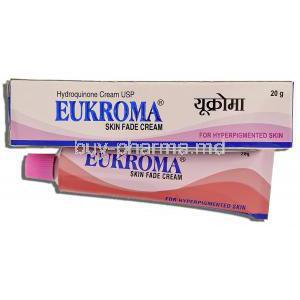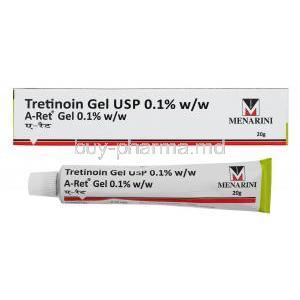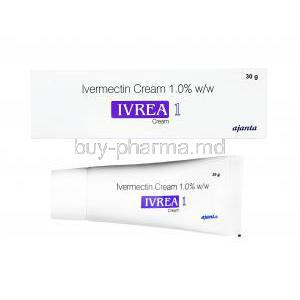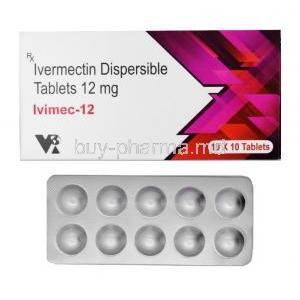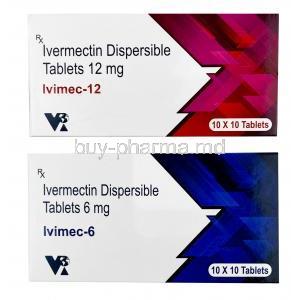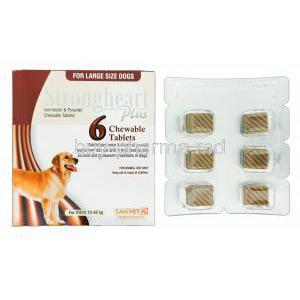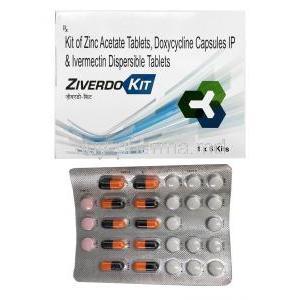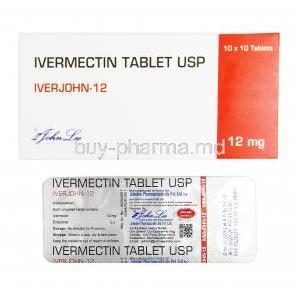1. Introduction to Benzamycin Gel
1.1 What is Benzamycin Gel?
Benzamycin Gel is a prescription-strength topical medication formulated to treat acne vulgaris. It is a dual-action therapy that combines an antibiotic with an oxidizing agent to combat the bacterial and inflammatory components of acne. The gel is typically applied directly to affected skin areas and is known for its efficacy in reducing both active breakouts and comedonal acne.
1.2 Brief History and Regulatory Approval
Benzamycin Gel was developed in response to the growing need for combination therapies in acne management. It received regulatory approval by health authorities such as the U.S. Food and Drug Administration (FDA) following clinical studies that demonstrated its effectiveness and safety. Its approval marked a significant advancement in acne treatment protocols by merging antimicrobial and exfoliative effects.
1.3 Therapeutic Class and Indications
This medication falls under the therapeutic class of anti-infective dermatological agents. It is specifically indicated for the treatment of mild to moderate acne vulgaris, particularly in patients who present with both inflammatory papules and comedonal lesions.
2. Composition and Pharmaceutical Formulation
2.1 Active Ingredients: Erythromycin and Benzoyl Peroxide
Benzamycin Gel contains two primary active ingredients:
- Erythromycin (3%) – A macrolide antibiotic that inhibits bacterial protein synthesis, thereby reducing Cutibacterium acnes colonization.
- Benzoyl Peroxide (5%) – An oxidizing agent with keratolytic properties, responsible for comedolysis and bactericidal activity.
2.2 Inactive Components and Preservatives
The gel also includes excipients such as alcohol, carbomer, sodium hydroxide for pH adjustment, and purified water. These components ensure stability, ease of application, and shelf-life integrity.
2.3 Physical Characteristics and Packaging Formats
Benzamycin Gel is a white to off-white gel supplied in dual-chamber systems or jars requiring reconstitution before use. It must be stored in a refrigerator after mixing and has a limited in-use shelf life, typically 90 days.
Benzaclin vs benzamycin
Benzaclin and Benzamycin are both topical acne treatments that combine benzoyl peroxide with an antibiotic, but they differ in the antibiotic they contain. Benzaclin contains clindamycin, while Benzamycin contains erythromycin. Both are effective for treating acne vulgaris, but may have different side effect profiles.
Benzamycin vs clindamycin
Benzamycin is a brand-name topical medication primarily used to treat acne, and it is a combination of two active ingredients: erythromycin and benzoyl peroxide. Erythromycin is an antibiotic that stops the growth of acne-causing bacteria, while benzoyl peroxide kills bacteria and helps to shed dead skin cells. Clindamycin, on the other hand, is a lincosamide antibiotic that can be used topically (often combined with benzoyl peroxide, e.g., in Benzaclin or Duac) or orally to treat various bacterial infections, including acne.
Benzamycin gel alternative
Antifungals (Topical & Oral):
- Ketoconazole
- Clotrimazole
- Selenium Sulfide
- Ciclopirox
- Miconazole
Acne Medications (Topical & Oral):
- Benzamycin
- Clindamycin
- Erythromycin (component of Benzamycin, also available as single-ingredient topical/oral)
- Benzoyl PeroxideAdapalene
- Tretinoin
- Tazarotene
- Azelaic AcidDoxycycline
- Minocycline
- Trimethoprim
- Isotretinoin
- Spironolactone
- Oral Contraceptives
3. Mechanism of Action: How Benzamycin Gel Works
3.1 Antibacterial Effect of Erythromycin
Erythromycin binds to the 50S ribosomal subunit of susceptible bacteria, inhibiting protein synthesis and limiting bacterial replication. This suppresses the activity of Cutibacterium acnes, a common acne-causing organism.
3.2 Keratolytic and Comedolytic Action of Benzoyl Peroxide
Benzoyl peroxide penetrates follicles and promotes exfoliation of dead skin cells, helping to unclog pores. It also releases free radicals that oxidize bacterial proteins, contributing to rapid bacterial cell death.
3.3 Synergistic Effect in Reducing Inflammation and Lesions
The dual mechanism results in a synergistic therapeutic effect—erythromycin controls infection while benzoyl peroxide reduces follicular blockage and inflammation. Together, they offer comprehensive management of both active and forming acne lesions.
4. Benzamycin Uses
4.1 Benzamycin Gel for Acne
Benzamycin Gel is officially approved for use in patients with mild to moderate acne, particularly those with a combination of pustules, papules, and comedones.
4.2 Reduction of Inflammatory and Non-Inflammatory Lesions
The medication targets both inflammatory lesions (such as pustules) and non-inflammatory lesions (like blackheads and whiteheads), providing a dual approach to acne resolution.
4.3 Use in Combination with Other Topical Acne Therapies
Benzamycin can be used alongside topical retinoids or salicylic acid products under medical supervision, allowing for a customized and multifaceted acne treatment regimen.
5. Off-Label Uses of Benzamycin Gel
5.1 Management of Rosacea-Associated Papules and Pustules
Though not FDA-approved for rosacea, Benzamycin Gel may be prescribed off-label to manage rosacea flare-ups involving pustules and inflamed skin.
5.2 Folliculitis and Other Superficial Bacterial Skin Infections
The antibiotic component makes it useful in treating bacterial folliculitis and other minor skin infections where Staphylococcus aureus or similar organisms are involved.
5.3 Off-label Use in Seborrheic Dermatitis and Perioral Dermatitis
Some dermatologists may recommend Benzamycin Gel for patients with seborrheic dermatitis or perioral dermatitis where secondary bacterial colonization is suspected.
5.4 Use in Acne Mechanica and Hormonal Acne
It may be helpful in cases of acne mechanica (caused by friction from helmets or masks) or hormonally influenced breakouts, especially as part of a broader treatment plan.
6. Dosage and Administration Guidelines
6.1 Standard Recommended Dosage and Frequency
Apply a thin film of Benzamycin Gel to the affected area twice daily—morning and evening—after cleansing and drying the skin thoroughly.
6.2 Application Instructions and Best Practices
- Wash hands before and after application.
- Avoid thick application; a small amount is sufficient for each area.
- Do not use on broken or irritated skin.
6.3 Duration of Use and Evaluation of Efficacy
Initial improvements may be observed within 2 to 4 weeks, with optimal results expected after 8 to 12 weeks. Continued use as prescribed enhances long-term outcomes.
6.4 Missed Dose Management
If a dose is missed, apply it as soon as remembered. If it's near the time of the next dose, skip the missed one—avoid double applications.
7. Benzamycin Side Effects
7.1 Common Side Effects
- Dryness and flaking of the skin
- Redness and mild irritation at application sites
- Transient stinging or burning sensation
7.2 Less Common and Serious Adverse Reactions
- Severe skin irritation or blistering
- Allergic contact dermatitis
- Secondary bacterial infections from broken skin
8. Important Precautions and Handling Instructions
8.1 Sun Sensitivity and Photosensitivity Precaution
The use of Benzamycin Gel may heighten sensitivity to ultraviolet light. Limit sun exposure and apply broad-spectrum sunscreen during treatment.
8.2 Avoiding Contact with Eyes, Mouth, and Mucous Membranes
Take care to prevent the gel from contacting sensitive areas such as eyes, nostrils, and lips. Rinse thoroughly with water if accidental contact occurs.
8.3 Use of Non-Comedogenic Moisturizers During Treatment
To mitigate dryness and peeling, apply oil-free, non-comedogenic moisturizers after the gel has dried fully. This maintains skin hydration without clogging pores.
8.4 Safe Disposal and Clean Handling of the Gel
Dispose of expired or unused gel according to local regulations. Do not flush down the sink. Always use clean hands or applicators to avoid contamination.
9. Contraindications and Situations to Avoid Use
9.1 Known Allergy to Erythromycin or Benzoyl Peroxide
Benzamycin Gel is strictly contraindicated in individuals with a documented allergy to erythromycin or benzoyl peroxide. Hypersensitivity reactions may include localized swelling, erythema, pruritus, or more severe manifestations such as angioedema. Use in these cases poses a significant risk and should be avoided entirely.
9.2 Hypersensitivity to Macrolide Antibiotics
Patients with a history of allergic reactions to macrolide-class antibiotics, including azithromycin, clarithromycin, or erythromycin, should not use Benzamycin Gel. Cross-reactivity may occur, triggering systemic or cutaneous hypersensitivity responses.
9.3 Existing Skin Conditions Worsened by Benzoyl Peroxide
Benzoyl peroxide may aggravate certain pre-existing dermatoses such as seborrheic dermatitis, rosacea, and chronic eczema. In these conditions, barrier dysfunction and increased sensitivity may exacerbate irritation or lead to flare-ups.
10. Drug and Topical Interactions
10.1 Interactions with Other Topical Acne Medications
Concurrent use of Benzamycin Gel with other topical acne treatments—such as salicylic acid, sulfur preparations, or retinoids—may increase the risk of cumulative skin irritation. Combination therapy should be initiated cautiously and spaced temporally (e.g., alternating morning and evening applications).
10.2 Use with Systemic Antibiotics or Retinoids
Systemic erythromycin and topical Benzamycin Gel should not be used together due to the potential for additive antibiotic exposure and resistance development. Likewise, concomitant use with systemic isotretinoin may heighten mucocutaneous dryness and sensitization.
10.3 Interaction with Cosmetic and Skincare Products
Avoid alcohol-based cleansers, exfoliating scrubs, and fragranced moisturizers during Benzamycin treatment. These products can compound irritation and compromise the skin barrier, reducing treatment tolerability.
11. Warnings and Special Careful Administration Considerations
11.1 Risk of Bleaching Hair or Fabric
Benzoyl peroxide is a potent oxidizing agent capable of bleaching textiles and body hair. Patients should allow the gel to dry fully before contact with clothing, bedding, towels, or hair to prevent discoloration.
11.2 Caution in Patients with Atopic Dermatitis or Eczema
Individuals with atopic skin conditions are at heightened risk for contact dermatitis and barrier disruption. The drying effect of Benzamycin may exacerbate eczematous lesions, requiring reduced frequency or alternative therapy.
11.3 Monitoring for Signs of Local Hypersensitivity
During initial weeks of therapy, clinicians and patients should monitor for signs of localized allergic responses, such as persistent redness, swelling, vesiculation, or burning. Discontinuation is advised if hypersensitivity is suspected.
12. Use in Special Populations
12.1 Administration in Elderly Patients
Elderly skin tends to be thinner, drier, and more prone to irritation. Pharmacodynamic response may differ due to changes in dermal absorption and sebaceous activity. Caution and reduced application frequency may be warranted.
12.2 Benzamycin Pregnancy
While topical erythromycin is categorized as FDA Pregnancy Category B, systemic absorption is minimal. Benzoyl peroxide is also considered low-risk. However, Benzamycin should only be used during pregnancy if clearly needed, with a careful evaluation of potential fetal risk versus therapeutic benefit.
12.3 Use in Nursing Mothers
Topical application presents a low likelihood of systemic absorption sufficient to reach breast milk. Nevertheless, avoid applying Benzamycin Gel on or near the chest to prevent inadvertent ingestion by nursing infants. Thorough handwashing after application is advised.
12.4 Pediatric Use and Safety
Benzamycin Gel is generally approved for use in individuals aged 12 years and older. In adolescents, careful monitoring for excessive dryness, peeling, or increased sensitivity is essential, particularly in patients with sensitive or acne-prone skin.
13. Overdose and Accidental Ingestion
13.1 Signs and Symptoms of Overuse
Topical overuse may lead to pronounced erythema, peeling, burning, and localized edema. Chronic overapplication does not enhance efficacy and increases the likelihood of adverse dermatologic reactions.
13.2 Systemic Toxicity and Emergency Measures
Systemic toxicity is unlikely due to minimal percutaneous absorption. However, accidental oral ingestion—particularly by children—may necessitate medical evaluation. Symptoms of systemic erythromycin toxicity include gastrointestinal upset, nausea, and abdominal cramps.
13.3 Guidance for Healthcare Providers
Healthcare professionals should advise patients to discontinue use immediately in the event of severe irritation or suspected ingestion. Supportive care and symptomatic treatment are typically sufficient. Activated charcoal may be considered in cases of substantial ingestion.
14. Storage and Shelf Life
14.1 Recommended Storage Conditions
Prior to mixing, Benzamycin Gel should be stored at controlled room temperature, away from direct sunlight and moisture. Once reconstituted, it must be kept refrigerated (2°C to 8°C) to maintain stability and potency.
14.2 Reconstitution and Refrigeration Requirements
Pharmacists or patients must combine the erythromycin powder with the benzoyl peroxide gel base according to manufacturer instructions. Once mixed, the gel requires refrigeration and should not be frozen. Avoid exposure to heat sources or repeated temperature fluctuations.
14.3 Shelf Life After Mixing and First Use
The shelf life post-reconstitution is typically 90 days under proper refrigeration. Discard any unused portion after this period, as chemical degradation may reduce efficacy and increase the risk of irritation.
Benzamycin Gel FAQ
- What is benzamycin gel used for?
- Benzamycin topical gel how to use?
- What is Benzamycin gel used for?
- What is benzoyl peroxide gel used for?
- What does erythromycin benzoyl gel do?
- How long can you use Benzamycin?
- Can we leave benzoyl peroxide gel overnight?
- Does benzoyl peroxide gel remove dark spots?
- Is benzoyl peroxide good for my face?
- Can you put benzoyl peroxide on an open wound?
- How to mix Benzamycin?
- What are the benefits of Benzamycin?
- Does benzoyl lighten skin?
- What is the generic name for benzamycin?
- When to apply Benzamycin?
- How is Benzamycin gel mixed?
- Does benzoyl peroxide remove warts?
What is benzamycin gel used for?
Benzamycin Gel, a combination of Erythromycin and Benzoyl Peroxide, is commonly recommended by dermatologists to address concerns related to acne vulgaris.
Benzamycin topical gel how to use?
Apply a layer to the affected areas twice a day–in the morning and once in the evening–or follow your doctor's instructions.
What is Benzamycin gel used for?
Benzamycin, a combination of erythromycin and benzoyl peroxide, is used topically to help manage acne problems by combining the effects of these two antibiotics to combat the bacteria that cause acne outbreaks.
What is benzoyl peroxide gel used for?
Benzoyl peroxide topical is used to treat acne.
What does erythromycin benzoyl gel do?
The combination of erythromycin and benzoyl peroxide is commonly prescribed for acne treatment, as it effectively targets the bacteria that cause acne breakouts while maintaining the cleanliness of skin pores, which are the small openings on the skin surface.
How long can you use Benzamycin?
3 months
Can we leave benzoyl peroxide gel overnight?
No
Does benzoyl peroxide gel remove dark spots?
Yes
Is benzoyl peroxide good for my face?
Yes
Can you put benzoyl peroxide on an open wound?
Yes
How to mix Benzamycin?
Before using it, gently shake the vial to ensure the powder moves freely within it. Then pour the quantity of 70% ethyl alcohol at room temperature into the vial (up to the marked level). Shake it immediately until erythromycin is completely dissolved. Next, combine this solution with the benzoyl peroxide gel. Stir until the mixture appears uniform (for 60 to 90 seconds).
What are the benefits of Benzamycin?
This treatment targets the bacteria that cause acne breakouts and clogged pores, while also regulating oil production and promoting skin dryness. It is commonly employed for managing acne cases, with noticeable progress sometimes evident within just two weeks.
Does benzoyl lighten skin?
Yes
What is the generic name for benzamycin?
Erythromycin and Benzoyl peroxide
When to apply Benzamycin?
Twice a day, morning and evening.
How is Benzamycin gel mixed?
Before using it, gently shake the vial to ensure the powder moves freely within it. Then pour the quantity of 70% ethyl alcohol at room temperature into the vial (up to the marked level). Shake it immediately until erythromycin is completely dissolved. Next, combine this solution with the benzoyl peroxide gel. Stir until the mixture appears uniform (for 60 to 90 seconds).
Does benzoyl peroxide remove warts?
No

